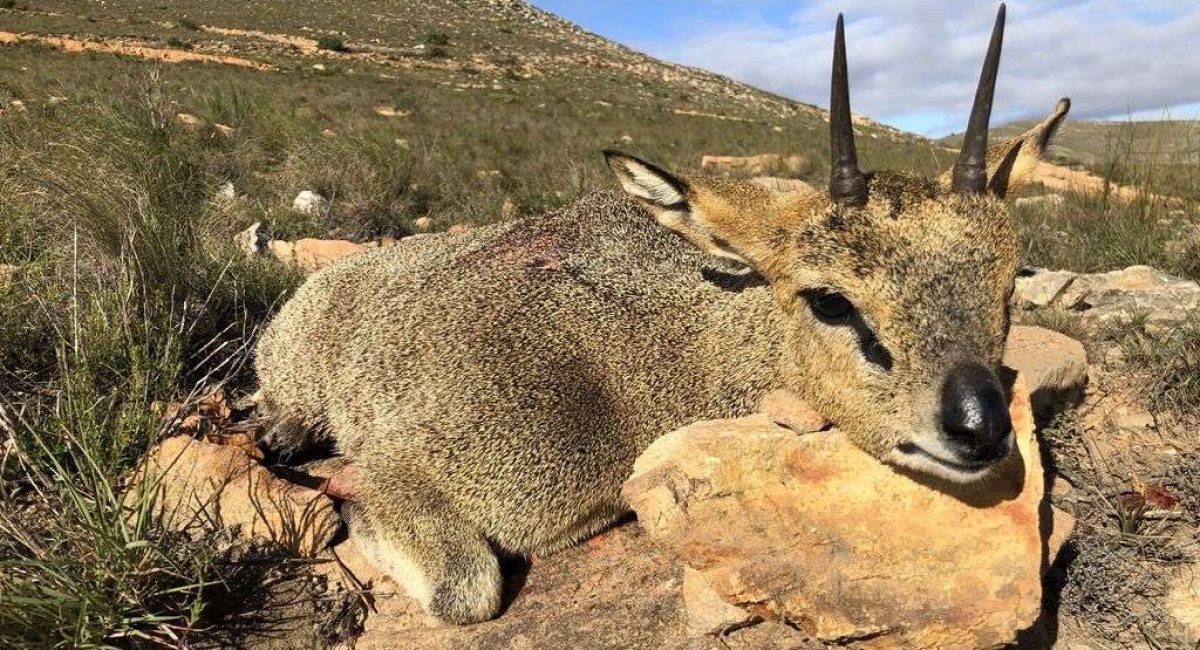
Klipspringer Characteristics | Scientific Name : Oreotragus Oreotragus |
|---|
Weight : 13kg (m and f) |
Shoulder Height : 60 cm (m and f) |
Breeding Season : Year round |
Minimum Calibre : 223 |
Klipspringer hunting in South Africa is mainly a mountain, spot and stalk hunt. Klipspringer or “rock jumpers” as translated from Afrikaans are widespread throughout Southern Africa. They are habitat specific and occur sporadically in their home range where the perfect conditions exist.
They are browsers and prefer bush and rock covered mountain slopes to grass cover. Klipspringer are territorial and the home range of a pair of Klipspringer is often less than 50 acres.
Klipspringer pair up for life and form small family groups of 3-5 animals. When the young mature, they leave home, pair up with a mate and establish their own territory. They are water independent and get enough moisture from the bush they feed on.
Female Klipspringer are often larger than their male partner although they don't carry horns. Trophy Klipspringer have a set of horns that extend well past the horns, with the rings exposed at the base. SCI minimum for klipspringer is 10 inches
A member of the Tiny Ten group of animals, they’re considered the pinnacle of Africa hunting when referring to the tiny antelope. Klipspringer hunting in South Africa is done by spot and stalk. Use a well bonded bullet when hunting klipspringer, too much expansion and the hair will come apart on impact. Their hides are notorious for hair slip and an expert skinner is required.
The cost of a klipspringer hunt is $1700 for a trophy klipspringer. Klipspringer hunting packages aren't common. The Tiny Ten Hunting Package $6400 for 8 days includes a trophy klipspringer, vaal rhebuck, steenbok and duiker.